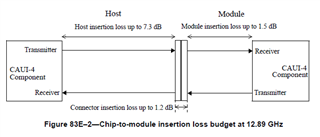I am planning to use a DS250DF230 re-timer as mentioned in the image below for the SFP connector reach extension.

Design Specifications :
PCB material FR4 - (FPGA, SFP connector).
Interface speed - 25Gbps
Connection : FPGA <-> Mid Plane connection <-> SFP connector (front port) . RX path re-timer will be placed near the FPGA and TX path Re-timer will be near the SFP connector.
My design constraint is that the SFP connector needs to be placed 400mm apart from the FPGA. Is it possible to achieve this trace length with the above-mentioned combination?
What is the maximum trace length we can achieve in this method?



